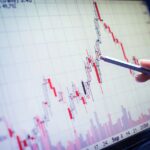In the vast and intricate world of economic indicators, Gross Domestic Product (GDP) stands as a paramount metric, a comprehensive gauge of a nation’s economic health. Its ubiquity in economic reports and discussions underscores its critical role in shaping policy decisions and guiding investors. By quantifying the total market value of all goods and services produced within a country’s borders over a specific period, GDP encapsulates the economic prowess of a nation, offering a snapshot of its financial vitality and guiding stakeholders in making informed decisions.
What is GDP?
Gross Domestic Product (GDP) represents the sum total of all economic activity within a country, reflecting the market value of all final goods and services produced in a given time frame. It is calculated through three primary methods: the production approach, which tallies the output of all economic sectors; the income approach, which sums all earnings generated by production; and the expenditure approach, which aggregates total spending on the nation’s output. These methodologies, though distinct, converge on a common figure, illustrating the comprehensive nature of GDP as an economic measure.
Components of GDP
GDP is dissected into four main components: Consumption, Investment, Government Spending, and Net Exports. Consumption encompasses private expenditure on goods and services, while Investment reflects business spending on equipment and infrastructure. Government Spending accounts for public expenditure on services and infrastructure, excluding transfer payments like pensions and unemployment benefits. Net Exports, the difference between a country’s exports and imports, completes the GDP equation. Each component plays a crucial role, with fluctuations in any segment influencing the overall GDP and, by extension, the economic health of the country.
Real vs. Nominal GDP
Distinguishing between real and nominal GDP is crucial for accurate economic analysis. Nominal GDP calculates the value of goods and services at current prices, thereby including the effects of inflation or deflation. In contrast, real GDP adjusts for price changes, offering a more precise measure of economic growth over time by isolating the impact of price level variations. This distinction allows economists and policymakers to discern genuine growth from inflationary effects, making real GDP a more reliable indicator of economic progress.
GDP Growth Rate
The GDP growth rate, a key indicator of economic momentum, measures the speed at which a country’s economy expands or contracts from one period to the next. Positive growth signifies expansion, indicating increased production and economic health, while negative growth points to contraction, which can signal economic troubles ahead. This rate not only influences government policy and investment decisions but also affects public sentiment, impacting everything from stock markets to employment prospects.
GDP’s Role in Economic Policy and Decision Making
Governments and central banks heavily rely on GDP data to craft economic policies. A robust GDP growth can lead to policy tightening to curb inflation, whereas stagnation or contraction might prompt stimulus measures to spur growth. Fiscal policies, including taxation and government spending, are often adjusted in response to GDP figures to manage economic cycles. Similarly, central banks use GDP data to make informed decisions on interest rates, aiming to balance growth with inflation control.
Limitations of GDP as an Economic Indicator
Despite its widespread use, GDP is not without its critics. It does not account for income inequality, non-market transactions, or the underground economy. Moreover, GDP overlooks environmental degradation and resource depletion, raising questions about sustainability. Such criticisms have prompted economists to explore alternative measures, like the Human Development Index (HDI) and Genuine Progress Indicator (GPI), which aim to provide a more nuanced view of economic well-being and sustainability.
Global GDP Trends and What They Indicate
Recent global GDP trends reveal a world grappling with diverse economic challenges, from geopolitical tensions to environmental crises. These trends, marked by fluctuations in growth rates across regions, underscore the interconnectedness of global economies and the ripple effects of policy decisions worldwide. Analyzing these patterns helps identify cycles of recession and expansion, guiding international investment strategies and policy formulations.
Understanding GDP is indispensable for anyone engaged in economic analysis or decision-making. This comprehensive indicator serves as a barometer of national economic health, influencing policy, investment, and debate around the globe. However, acknowledging its limitations is equally important, as no single measure can encapsulate the full complexity of an economy. By combining GDP data with other indicators, stakeholders can gain a richer, more nuanced understanding of economic conditions and prospects, navigating the intricacies of the global economy with greater insight and precision.
GDP can be calculated using three approaches: the production (or output) approach, which sums the value added at each stage of production; the income approach, which totals all incomes generated by production (wages, profits, etc.); and the expenditure approach, which adds up all spending on final goods and services.
GDP growth indicates the rate at which a country’s economy is expanding or contracting. Positive growth suggests a healthy, expanding economy, potentially leading to more jobs and higher income levels. Negative growth can indicate economic problems, potentially leading to unemployment and decreased spending.
Governments use GDP data to formulate economic policies, make decisions on taxation and spending, and plan for future economic development. Central banks also use GDP figures to guide monetary policy, including decisions on interest rates.
Global GDP trends can significantly impact individual countries through trade, investment flows, and economic sentiment. A strong global economy can enhance export opportunities and attract investment, while a weak global economy can do the opposite.















